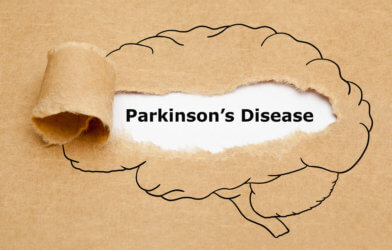Glioblastoma is the most common type of brain cancer, and almost always comes back even after the first tumor is surgically removed. Survival is low, with only about 25% living after one year, and the odds drop to just 5% by year five. Now, University of Wisconsin-Madison researchers have developed a hydrogel capable of being injected into the brain to help improve glioblastoma survival rates.
The main challenge of glioblastoma treatment is that it’s difficult for surgeons to be able to remove the tumors in their entirety, so they leave some parts that can stay and wreak havoc in the brain. “One characteristic of glioblastoma is that the tumor cells are very aggressive, and they will infiltrate the surrounding tissues,” explains Quanyin Hu, an assistant professor at the university’s School of Pharmacy. “So the surgeon can’t clearly feel the boundaries between the tumor and the normal tissue, and you cannot remove as much as possible because all the tissues in the brain are extremely important — you certainly don’t want to remove too much.”
The new hydrogel developed by Hu and his team would help address this by being applied after excision and injected into the brain cavity behind the newly-removed tumor. Gel delivery is a useful method because it completely fills the brain cavity, and can slowly release medicine into the surrounding brain tissue to actively boost the immune response and kill cancer cells.
The hydrogel is made of nanoparticles designed to recondition macrophages, which are types of immune cells that normally help remove pathogens. When it comes to tumors, they don’t have such a positive impact. They can actually suppress the immune system and aid cancer growth. After surgery, these cells run to the excision site, making the problem worse.
“We want to take advantage of these macrophages and turn them from enemy to ally,” says Hu. To accomplish this, the nanoparticles can engineer the macrophages to specifically target a protein called CD133. The team also added an antibody, CD47, that blocks a signal that helps the immune cells recognize the cancer cells.
Preclinical results in mice showed that the gel successfully generated the engineered macrophages, allowing them to effectively find and kill stem cells instead of helping them grow back stronger. This could be groundbreaking if the same is seen in human subjects.
Hu and colleagues hope that their next steps involve testing in larger animals, and also monitoring long-term side effects and complications related to toxicity. “We have a lot of work to do before it can be potentially translated into the clinic, but we feel confident that this is a very promising approach for bringing new hope to patients with glioblastoma so they can recover after surgery,” concludes Hu.
This study is published in the journal Science Translational Medicine.











